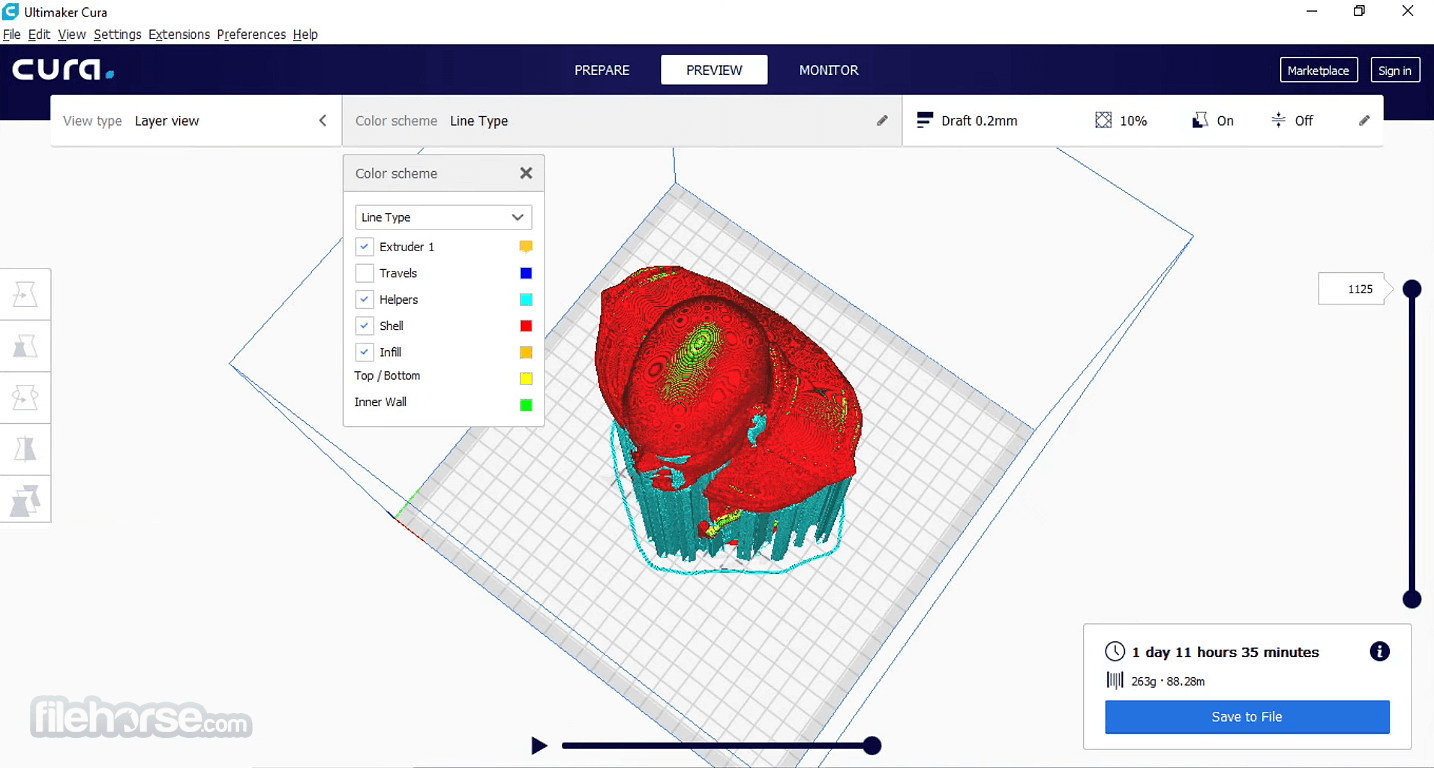

#ULTIMAKER CURA 4.8 0 SOFTWARE#
Enabling modifications to the AppImage for Linux.Ĭura is a slicing software developed by David Braam in 2014 for this purpose – it was later acquired by Ultimaker.Renaming the AppImage and moving it to the “Linux files” folder.Downloading the Cura AppImage for Linux.Clicking on the “Download for free” button for Cura.It’s the fastest, most optimized Ultimaker Cura yet, making print preparation as seamless as ever. Ultimaker Cura 4.7 is officially live – and with it, improvements to workflow acceleration, ease of use, and Cloud integration. Can you use Cura commercially? Developer(s) The Ultimaker Cura icon – The trigger by the programs is a false positive and we concluded and verified that the application is safe to use.
#ULTIMAKER CURA 4.8 0 PROFESSIONAL#
Ultimaker, the global leader in professional 3D printing, has launched the beta for Ultimaker Cura 5.0, the latest version of its free, open source, slicing software. Ultimaker sets new 3d printing milestone with the release of Ultimaker Cura 5.0.
#ULTIMAKER CURA 4.8 0 FREE#
Ultimaker Cura is free to use, open-source software compatible with a wide range of 3D printers. How much does Ultimaker Cura software cost? Is Cura Ultimaker free? The position of that line is not adjusted though, so it gets printed 0.15mm or so towards the side, but this material is meant to flow into the gap precisely, leaving no gap.Ĭompensate Wall Overlaps is also replaced by the variable line width implementation in Ultimaker/CuraEngine#1210.3. Due to the setting Compensate Inner Wall Overlaps, it's going to calculate how much these two innermost walls overlap, and reduce the flow rate of one of them to match the remaining non-overlapping volume precisely. What happens is that Cura draws 6 contours for this ring, of which the middle 2 overlap a lot. One thing you are missing, I think, is that there is theoretically no gap in the second picture (aside from the little lip at the bottom of the picture). The threshold is 2 square line widths there, and this is not configurable.

It's not removing that gap filling because it's not tiny enough. I've explained the targets to go for here, although I think that's something you'll already know: Lowering the line width is (in my opinion) the best solution for such cases. Setting "fill gaps between walls" to "nowhere" gets rid of the extra extrusion, which is why I think this is gapfill. Setting it to 0% infill doesn't resolve the issue. Setting 4.8.0 to 0.05 fixes the issue, I assume by moving the issue to a tighter curve radius. However, setting 4.7.1 to 0.25 does NOT cause the issue. The only settings I see changed between the 2 versions were "Maximum Resolution" and "Maximum Travel Resolution". It was a bit finicky to get the radius just right. I was able to create a more minimal SolveSpace project that can reproduce this (with "export chord tolerance (in mm)" set to 0.02). I initially noticed this with the ripple test model (from here). Gapfill should not be placed between wall lines.

I haven't printed with this yet, but I would expect to see some extra zits. Gapfill is placed in between wall lines and the print time is extended slightly. Slice a model with a fairly specific curve radius (depending on the maximum resolution).Ĥ.8.0 (yellow lines around corners of right cube and between walls of cylinders).Have "fill gaps between walls" set to everywhere.


 0 kommentar(er)
0 kommentar(er)
